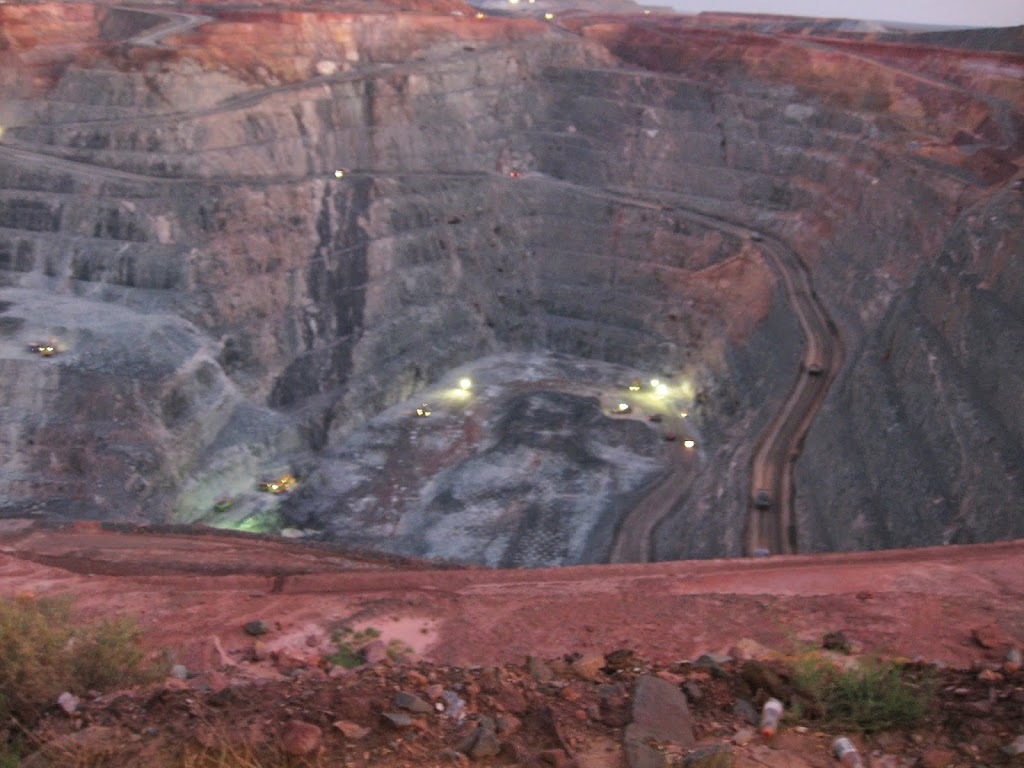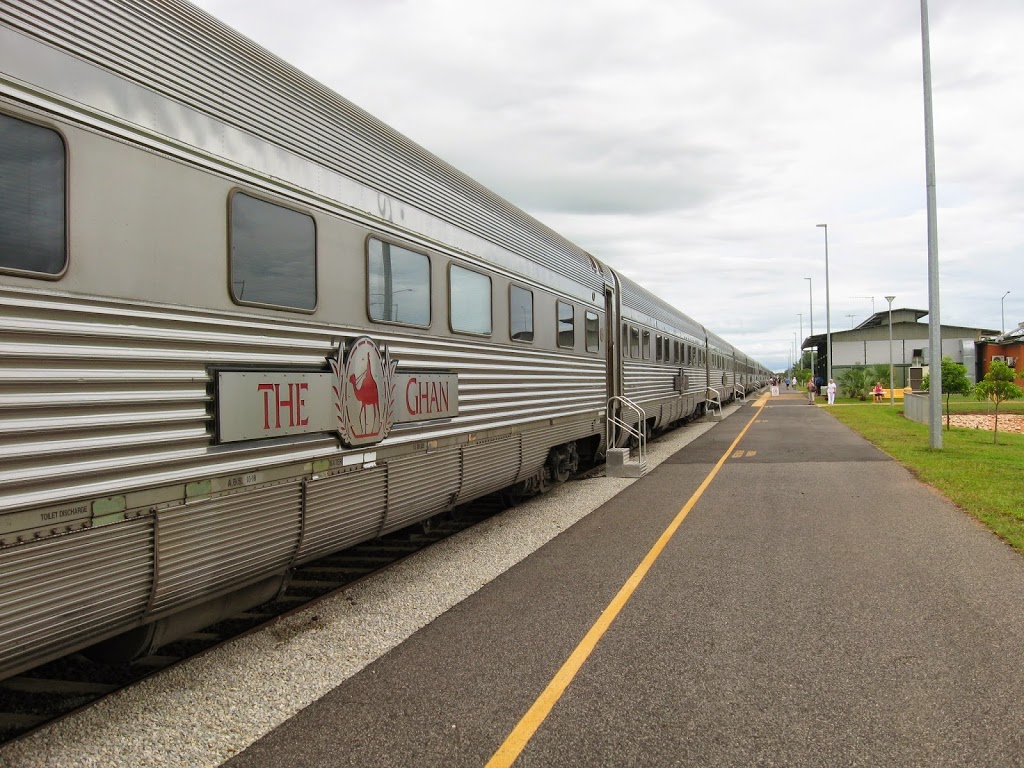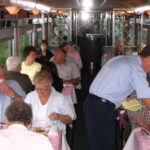(This is Part Three of a story I wrote for the Dallas Morning News, recording some of the events that took place as I rode the Indian Pacific, east to west across Australia, and then the Ghan from Darwin in the north to Adeaide in the south.)
Framed by a miraculous sunset, the Indian Pacific arrives for a two-hour stop at Kalgoorlie. Gold was discovered here in 1893 and the town’s main attraction is the Super Pit, a monstrous “open cut” mine that’s a mile across and nearly 1000 feet deep. Many of the buildings have a distinct Victorian design, and there are even three legal brothels. As our tour bus slowly passes one called The Red House, two of the girls wave cheerfully from a picture window, prompting our driver to note rather wistfully that there were once more than 40 such establishments here in the town’s heyday.
When I awaken the next morning, the Indian Pacific is in the final stretch run of our trans-continental journey. In the dining car over breakfast, passengers exchange email addresses as we trundle through the outskirts of Perth on the shores of the Indian Ocean. Ten minutes later, the first part of my crisscrossing of Australia comes to an end.
As my Qantas flight settles through cloud layers on its approach to Darwin, I recall a fellow passenger on the Indian Pacific who had said – quite proudly, I thought – that Australia was “either to hot or too cold, too wet or too dry.”
He was right: Darwin is steamy-hot and it’s pouring rain. Sightseeing is often not an option in the Wet Season here, so I spend a relaxing afternoon reading in the plant-filled lobby of the Novotel Atrium Hotel.
The dining room features smoked crocodile on the menu and a half-dozen servers from various European countries. My dinner is brought by a young woman from Estonia who says she is here to make a little money and to improve her English which, I note, is already liberally spiced with an Aussie twang.
The sleek silver Ghan stands waiting at the station platform the next morning: 23 rail carriages behind two 4000-horsepower locomotives. The train’s name comes from the nickname given to Afghan herders who came to Australia along with the camels that carried men and supplies into the Outback during the late 1800s.
A rail line linking Adelaide on the Southern Ocean with Darwin in the far north was always the plan, but the final link – the 882 miles between Alice Springs and Darwin – wasn’t completed until 2004.
As we rock along heading due south along this newer stretch of track, the landscape is lush and green. Flocks of white egrets follow cattle grazing in knee-deep grass among the red gum trees. Dark brown termite mounds – many six to seven feet high – rise up from the pastures, silent testimony as to why Australian railroads are built with concrete, not wooden, crossties.
Just after lunch, the Ghan comes to a stop at Katherine, a town of some 7,000 people. One of the first “Flying Doctor” services was located here, with pilot/physicians answering emergency calls from ranches and farms hundreds of miles away in the Outback. Dr. Clyde Fenton was one of the first and his canvas-covered bi-plane, a 1934 deHaviland Gypsy Moth, is on display in a corrugated metal hangar.
Across town is the Katherine School of the Air, with a faculty of 17 teachers conducting classes by satellite and TV monitors for 208 children scattered over half-a-million square miles of Outback. I ask one of the faculty members if it isn’t difficult to conduct classes in that way. “Not really”, she said. “The only time it’s a bit of a problem is when we have choir practice.”





